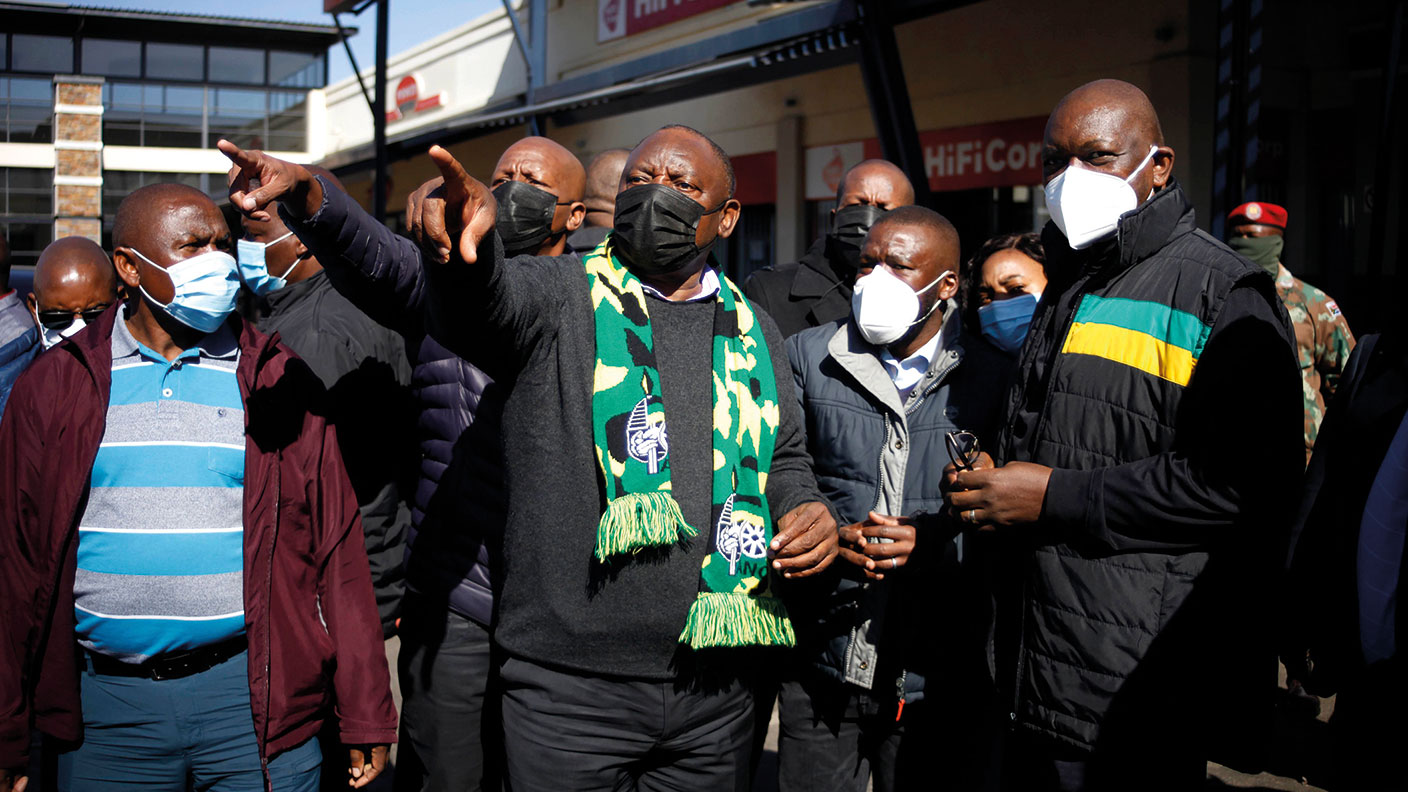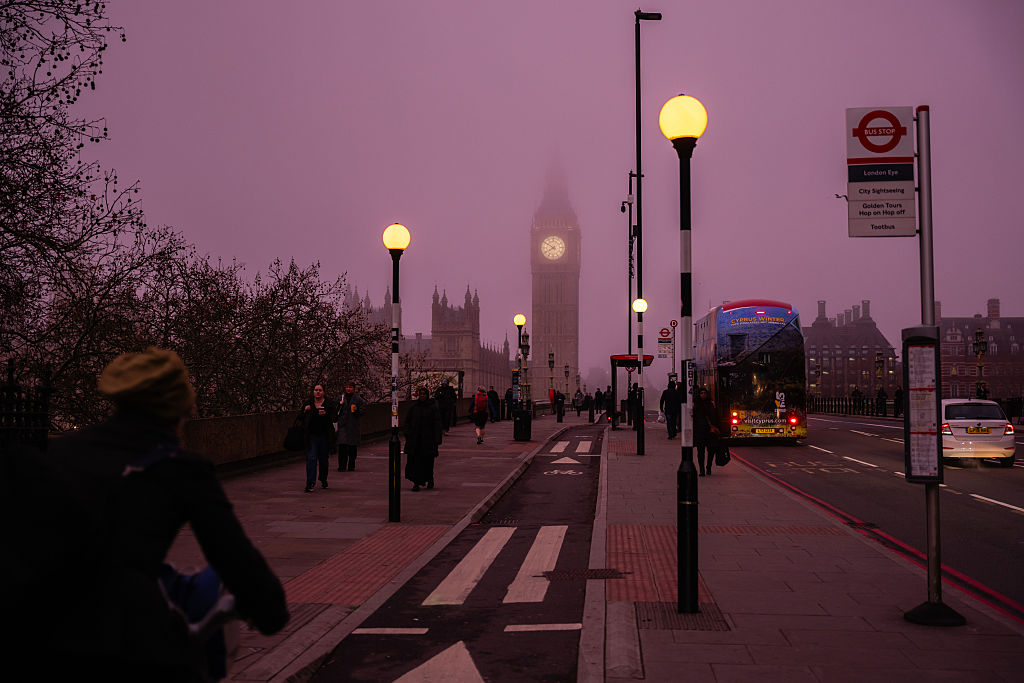What's behind the riots that shook South Africa?
A combination of the pandemic, harsh lockdowns and a troubled economic legacy has made the most industrialised nation in Africa a tinderbox. What will happen next?

What’s happened?
The worst unrest since the end of apartheid left at least 330 people dead last month and shone a spotlight on the corruption, racial tensions and vicious political rivalries that plague South Africa – as well as its exceptional, entrenched economic inequality. In a wave of rioting and looting, about 40,000 businesses were vandalised, with the damage estimated at around $3.4bn.
After a week of mounting chaos, order was restored when the government sent 25,000 troops to KwaZulu-Natal province around Durban (the largest port in sub-Saharan Africa) and Guateng province around Johannesburg (the country’s commercial hub). The two provinces contribute half of the GDP of Africa’s most industrialised nation and almost half its population.
South Africa has long been a tinderbox, with the economic devastation wrought by the pandemic and lockdowns (and alcohol ban) creating ideal conditions for a social conflagration. Even so the violence was unprecedented – and all the more depressing given its proximate cause.
MoneyWeek
Subscribe to MoneyWeek today and get your first six magazine issues absolutely FREE

Sign up to Money Morning
Don't miss the latest investment and personal finances news, market analysis, plus money-saving tips with our free twice-daily newsletter
Don't miss the latest investment and personal finances news, market analysis, plus money-saving tips with our free twice-daily newsletter
And the proximate cause was what?
The jailing of former president Jacob Zuma for contempt of court in refusing to co-operate with a judicial inquiry into “state capture” during his presidency. Within hours, calls for an “uprising” by Zuma’s supporters were circulating on social media and a wave of looting had begun.
Significantly, the targets were not only shops, banks and local businesses, but also strategic targets crucial to South Africa’s food supplies, including warehouses, logistics centres, lorries and highways in KwaZulu-Natal, Zuma’s home state and powerbase. President Cyril Ramaphosa, who ousted Zuma as ANC leader, accused his rival’s allies of instigating and organising what he called an “attempted insurrection”.
Is Covid-19 a factor?
South Africa was already in recession when the pandemic hit and the government imposed one of the strictest lockdowns in the world. The economy contracted by 7% last year and unemployment hit a record level of 32.6% in the first quarter of 2021. Two-thirds of young people are unemployed and three in five live in poverty.
Covid-19 has certainly made things worse: over the past year, almost two-thirds of households reported running out of money to buy food and almost one in five experienced weekly hunger. Then, in May, the government ended Covid-19 relief payments, leaving six million people without cash. But while the pandemic helped tip the country into chaos, the causes are much longer-term.
How had the economy been doing?
South Africa began the post-apartheid era facing a historic challenge: it had to overhaul an economy dominated by mining, grow sectors such as tourism and agriculture, while overcoming a legacy of colonial exploitation, racial oppression and global isolation. To start with, the ANC government (led by Nelson Mandela, then Thabo Mbeki) did okay, helped by the global boom in commodity prices.
Real per-capita income grew steadily (from around $5,500 in 1994 to almost $7,500 in 2007, figures rebased on 2010 terms). Between 1998 and 2008 GDP grew by a steady 3.5% a year, doubling the size of the black middle class. The government built millions of houses, invested in infrastructure and increased welfare payments to millions of the poorest.
There’s a but?
But since 2008 GDP per capita has been static and has now fallen back to the level of the mid-2000s. First, the global financial crisis of 2008 hit, destroying demand for the mineral deposits at the centre of South Africa’s economy and wiping out about half of the roughly two million new jobs that had been created in the previous four years.
Second, political leadership rotted as the ANC morphed under Mbeki then Zuma from liberation movement into the increasingly corrupt ruling party of a de-facto one-party state. According to Ramaphosa, some $34bn of state funds went “missing” under Zuma. By some accounts, the ANC’s fiefdoms are akin to the failed states of Central America – El Salvador, Guatemala, Honduras – where politics and organised crime are two sides of the same coin.
What about inequality?
In the aftermath of apartheid, the government left land and other assets largely in the hands of the predominantly white elite. This was the de-facto price of a peaceful transition to democracy and access to international funding. But it has left many black South Africans behind and feeling condemned to a continuing economic, social and educational apartheid.
The lack of investment in a meaningful education system for non-whites under apartheid is a lasting legacy. And rates of stunted growth in children – an indication of malnutrition – have remained stubbornly high since 1994, at about a quarter or more. “The effects are felt decades later, in poor school results, a life on the margins of the job market and long-term health problems,” says Joseph Cotterill in the Financial Times.
Is the inequality bad by global standards?
Yes. South Africa is one of the world’s most unequal countries – and it has got more unequal over the last 30 years. According to the World Inequality Database, the share of national income taken by the richest 10% has grown from less than 50% in the early 1990s to around 65% now. The share taken by the poorest half of the population has shrunk from over 10% then to around 5% now. In terms of overall household wealth, it’s even worse. Around 10% of South Africans own an estimated 90% of the wealth, with 80% owning nothing at all. Some black people, with political connections, have got rich, and inequality is rising among non-whites. But overall, according to government statistics (from 2019), 64% of black South Africans live in poverty, compared with 1% of whites. Zuma is back in court next week for trial on separate corruption charges. South Africans are braced for the verdict.
Get the latest financial news, insights and expert analysis from our award-winning MoneyWeek team, to help you understand what really matters when it comes to your finances.
Simon Wilson’s first career was in book publishing, as an economics editor at Routledge, and as a publisher of non-fiction at Random House, specialising in popular business and management books. While there, he published Customers.com, a bestselling classic of the early days of e-commerce, and The Money or Your Life: Reuniting Work and Joy, an inspirational book that helped inspire its publisher towards a post-corporate, portfolio life.
Since 2001, he has been a writer for MoneyWeek, a financial copywriter, and a long-time contributing editor at The Week. Simon also works as an actor and corporate trainer; current and past clients include investment banks, the Bank of England, the UK government, several Magic Circle law firms and all of the Big Four accountancy firms. He has a degree in languages (German and Spanish) and social and political sciences from the University of Cambridge.
-
 The most influential people of 2025
The most influential people of 2025Here are the most influential people of 2025, from New York's mayor-elect Zohran Mamdani to Japan’s Iron Lady Sanae Takaichi
-
 Millions of parents are missing out on up to £720 a year in extra pension cash – are you affected?
Millions of parents are missing out on up to £720 a year in extra pension cash – are you affected?A mum who narrowly missed out on the pension boost said she “never knew the government rule existed” and wants other parents to use it
-
 Market predictions for 2026: Will Dubai introduce an income tax?
Market predictions for 2026: Will Dubai introduce an income tax?Opinion My 2026 predictions, from a supermarket merger to Dubai introducing an income tax and Britain’s journey back to the 1970s
-
 The steady rise of stablecoins
The steady rise of stablecoinsInnovations in cryptocurrency have created stablecoins, a new form of money. Trump is an enthusiastic supporter, but its benefits are not yet clear
-
 Goodwin: A superlative British manufacturer to buy now
Goodwin: A superlative British manufacturer to buy nowVeteran engineering group Goodwin has created a new profit engine. But following its tremendous run, can investors still afford the shares?
-
 A change in leadership: Is US stock market exceptionalism over?
A change in leadership: Is US stock market exceptionalism over?US stocks trailed the rest of the world in 2025. Is this a sign that a long-overdue shift is underway?
-
 Modern Monetary Theory and the return of magical thinking
Modern Monetary Theory and the return of magical thinkingThe Modern Monetary Theory is back in fashion again. How worried should we be?
-
 Metals and AI power emerging markets
Metals and AI power emerging marketsThis year’s big emerging market winners have tended to offer exposure to one of 2025’s two winning trends – AI-focused tech and the global metals rally
-
 King Copper’s reign will continue – here's why
King Copper’s reign will continue – here's whyFor all the talk of copper shortage, the metal is actually in surplus globally this year and should be next year, too
-
 The coming collapse in the jobs market
The coming collapse in the jobs marketOpinion Once the Employment Bill becomes law, expect a full-scale collapse in hiring, says Matthew Lynn